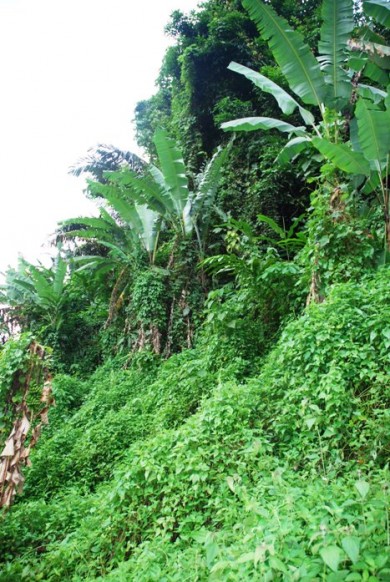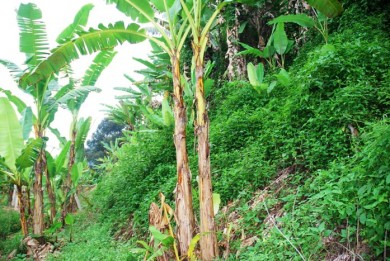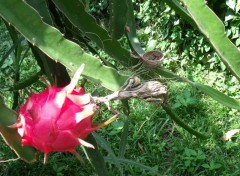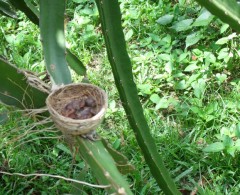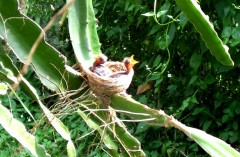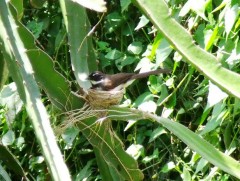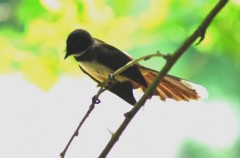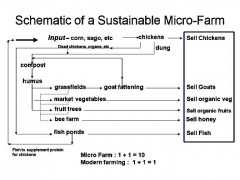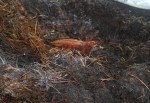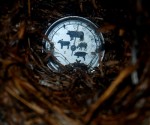Jul 04, 2017
Today at the Wild Farming Pilot #wildfarming
'Wild Farming' is a work-in-progress to mimic nature. On a vegetable plot, we will plant maybe 40% non-market plants, some with insect repellent properties, some that are just aromatic to confuse insects, etc., and 60% a mix of, or a variety of, market vegetables and plants. In our pilot plot here, the market vegetables are ridge gourd, brinjal, bird's eye chili, sweet corn and lady's fingers.
We are expecting some sweet corn next week; "GMO free some more" ![]()
Chilies should be plentiful next couple of weeks. Lady's fingers have started to produce. The terung has slowed a bit but we shall fix that with a compost dressing this couple of days. Over at the petola section, they are working overtime!


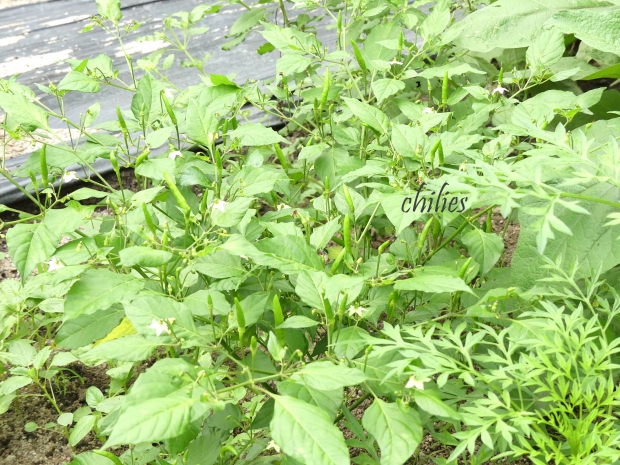


14:26 Posted in Nature Farming, Permaculture, Sustainable Farming, Wild Farming | Permalink | Comments (0) | Tags: wild farming, sustainable agriculture, organic farming
Oct 14, 2011
Slope Farming I
Land is getting scarce and sometimes we have to work on very steep slopes.
Accessibility and erosion then become major concerns.
Using used tires to make stairways is one way to create permanent, stable access with minimal erosion.
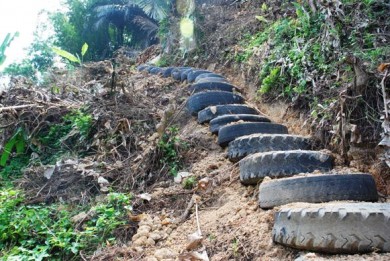
The top rim of the tire should be removed (using a full tang, heavy survival knife is best for this job). Earth used to fill the tires should then be compacted.
This stairway has been holding itself very well with no erosion or stability problems through two monsoon seasons now.
12:35 Posted in Permaculture, Sustainable Farming | Permalink | Comments (1) | Tags: uses for used tires, tire gardening, tire stairs, permaculture, sustainable agriculture
Mar 14, 2011
Permaculture At The Farm I
Here's some permanent agriculture (permaculture) features at the farm:
Alley cropping of napia grasses to reduce pressure on arable land for ruminants. By cultivating grasses we can raise up to 200 goats per acre of land versus around 15 here in Malaysia. We alley crop with nitrogen-fixing leguminous gliricidia septum. It may be necessary to fallow with leguminous cover crops after a couple of years. At the moment, we ferment chicken discards such as feathers, guts, etc. to produce a liquid fertiliser, and fertilise twice a year. So far, production of grass has been maintained, a good example of sustainability.
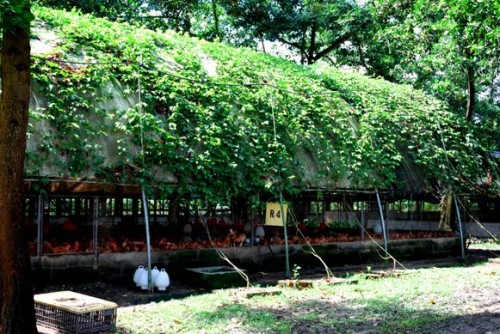
Passion (fruit) vines grow fast, and produce sufficient foliage to impart noticeable cooling. Sun-shading using plants is efficient, easy, with little maintenance needed, and have practically no running costs. Next, passiflora shades in the chicken fields; side effects - more insects and vitamin Cs for the chickens!
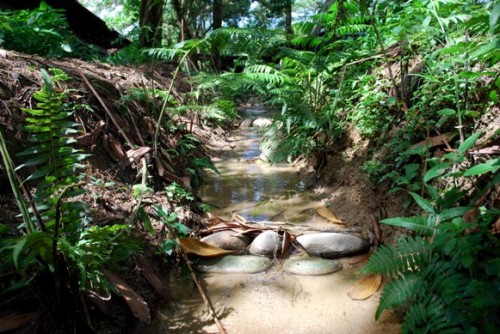
Earth drains permit infiltration of water and generally slows down run-offs. However, in our heavy monsoon downpours, earth drains need regular maintenance and may contribute to erosion.
A judicious mix of earth and concrete drains may be necessary, in addition to other water retention and diversion strategies.
Earth drains increase available planting spaces in small farms. Earth drains at our farm are income generating, producing a variety of crops - watercress, edible ferns, pandan leaves, arrowroots, and various edible taro tubers.
The picture shows the laying of low stone barriers across earth drains to slow down water flow and hence reducing erosion. They also allow for deeper, slower flowing sections enabling feeding and hence increasing the population of wild eels which are harvested.
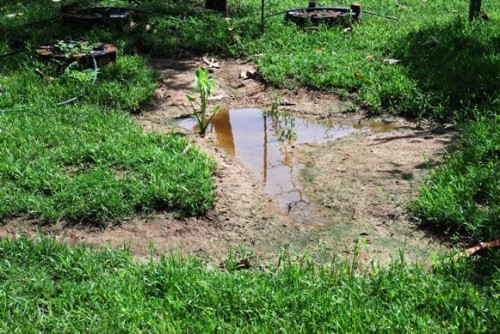
Shaping of land to create catchment areas to retain water, to slow down flow of rain water, and in the case in this picture, to reduce water-logged areas. In the process planting spaces are created for growing water loving vegetables - here, just planted watercress and arrowroot.
After a down pour, the land used to get soggy and difficult to work for days. With these catchment areas, the soggy areas are gone and the catchment area retains water for weeks (due to high water table) - good for planting income generating water loving vegetables.
12:03 Posted in Permaculture | Permalink | Comments (2) | Tags: permaculture, napia grass, sustainable agriculture, organic farming, natural sun-shading, passion fruits, swales, earth drains, retention ponds
Apr 13, 2010
Organic Farming - Oasis For Birds
An organic farm is like an oasis to birds. At our farm we have counted close to 50 species. Foreign workers at our farm comment that there's no longer any necessity to keep them in cages as they are all around us and we don't even have to feed or water them! That's a valuable lesson they will take back with them after they finish their contract with us.
And the birds lost most of their fear for humans. They will nest anywhere; next to the kitchen, on pillars, inside a comb of bananas, or like the photos here, on a dragon fruit plant in broad daylight in plain view of passer-bys and vehicles :
Right next to a ripened dragon fruit.
A couple of hatchlings in a meticulously weaved cup with tidy, even rim.
The bird that made this cup is the Pied Fantail or Rhipidura Javanica Longicauda.
In our farm, they have grown used to being in close proximity to humans, but remain wild as nobody in the farm is allowed to feed the birds.
The Pied Fantail is distinguished from other Fantails by pale underparts with a contrasting blackish breast-band.
When annoyed, it gives a chit, cheet sound to distract you from its nest.
It lays a clutch of 2 eggs and is common throughout South East Asia.
Mum's back.
Close up (click on picture) of the Pied Fantail. Note the breast-band, and the barely noticeable white eye-brow.
Here's why they are named Fantail (click on pic for close-up).
18:04 Posted in Blog | Permalink | Comments (0) | Tags: organic farming, sustainable agriculture, birding
Nov 02, 2009
Sustainable Farming - A Model
To be sustainable, inputs must be less than outputs. Inputs include fuel and all forms of energy, labour and raw materials. Even treatment of wastes must not consume excessive energy. For a farmer to practice sustainable agriculture, he must derive a reasonable income from his efforts.
This is a model for sustainable agriculture we developed at our farm (click to enlarge):
This how an acre of land may look like (click to enlarge):
We calculated a net income of RM3000 to RM5000 per month is possible from such a farm.
10:22 Posted in Sustainable Farming | Permalink | Comments (3) | Tags: sustainable farming, sustainable agriculture
May 27, 2009
Carcasses - Compost 'em for Sustainability
The disposal of carcasses and animal wastes often pollutes the environment. In Malaysia, farms generally bury them or burn them.
At DQ, we compost them and return them to the soil as fertiliser and as soil amendment. We have innovated our own method of composting carcasses, after much trial and error, as follows:
Lay the carcasses and wastes in layers and between the layers, cover them with carbon material such as dried lallang, leaves, etc. We generally require the abdomen of all carcasses to be opened to prevent inadvertently creating anaerobic conditions from forming inside the carcasses which may result in the formation of toxins.
Lactobacillus is sprayed on the layers to speed up the heating process. Lactobacillus is a medium heat microbe and works well and fast at our ambient temperature of around 30 celcius. Within a day they will bring the temperature of the heap to 45 celcius for the thermophilics to take over.

With enough moisture and oxygen, actinomycetes will jump into action almost immediately breaking down the materials in the heap and giving the characterisitic "earth" smell to your compost at the end.
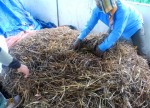
Cover up the pile neatly to retain the heat for the thermophilics to do their work thoroughly.
After a couple of days, the heat generated will be sufficient to cook an egg in a short while. Or to cook beef:
65 celcius - hot enough to cook beef.
The pile or heap should be turned a minimum of two times to ensure that as much of the material has gone through the heating process to destroy pathogens and even some toxins. At DQ this process will take 30 days.
After that, we introduce local composting earthworms to turn the compost to humus / vermicast. The composting earthworms ( eisenia fetida) works pretty fast, within 10 days they will have a few inches of vermicast for you to collect and use.
( Do not use imported earthworms as there are millions of microbes in the guts of earthworms and you may be introducing 'aliens' to our environment).

Beautiful black humus in just 40 days. The end result is a microbes-rich fertiliser suitable to be used as a soil fertiliser, as an amendment or as a foliar spray. We use this humus to build up sandy soil, as an anti-fungal, as fertiliser and generally to return to the soil what has been taken from it.
If you are already applying some other organic fertiliser, the addition of humus made the DQ way at a rate of 100kg per acre to acre and a half will see a 10 to 15 percent improvement in yields. And that's 10 to 15% straight to the bottom line as the inputs used are generally free!
17:23 Posted in Chickens | Permalink | Comments (5) | Tags: compost, carcasses, sustainable agriculture, organic farming
Feb 23, 2009
Panas Terik - Heat Wave
It's "unseasonal", the heat at our farm lately. Noon day ambient can reach 38 celcius. Chickens stop eating and some drop dead from heat stroke.
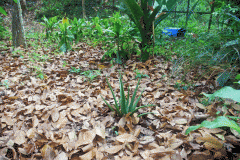
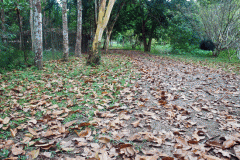

13:04 Posted in Blog | Permalink | Comments (0) | Tags: heat wave, sustainable agriculture
Jan 23, 2009
Is your organic farmer "sustainable"?
So, is your organic farmer 'sustainable'? Does he practise sustainable agriculture, or is he the organic version of the commercial industrialised farmer?
Here's an example of how we practise sustainability:
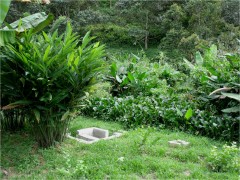
This is a filtration pond. Plants are used to absorb the nutrients in waste water from the fish ponds and from washing the rebans. From the pond, the water flows out into a bacterial filter to further break down the pollutants.
From the bacterial filter, a long narrow winding stream further filters the water using water plants. 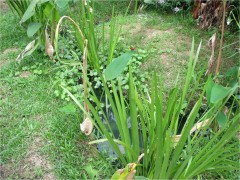
Alongside, water loving plants such as bananas, misai kucing, etc. will absorb all nutrients that seep into the surrounding soil.
We try to reduce our foot print as best as we can.
So, is your organic farmer 'sustainable' or is it just business for him?
00:45 Posted in Permaculture | Permalink | Comments (0) | Tags: permaculture, sustainable agriculture, green, organic
Apr 14, 2006
Sustainable Agriculture
We try to be as sustainable as possible at our farm. We don't use electricity, minimise the use of diesel ( we are experimenting with our own bio-diesel), and minimise inputs into the farm.
Here is how we shade seedlings from the sun - no plastic sheets, etc., just some branches and good old dried lalang.
 Some farmers grow mushrooms and sprouts on sawdust and claim the products to be organic. Well, it is not. The sawdust comes from treated wood.
Some farmers grow mushrooms and sprouts on sawdust and claim the products to be organic. Well, it is not. The sawdust comes from treated wood.
We use dried lalang. Sometimes we shred the lalang, depending on the requirement of what is planted.
You can contribute to sustainability by buying local. Buy from farms near to you. This reduces tranportation fuel. Imported fruits tastes great, but a lot of fuel was burnt bringing those delicious strawberries to you. The fruits may be cheaper than locally grown to you as a consumer, but the costs to the Earth is more. The price you pay reflects the subsidies most governments give to farmers either directly or indirectly. Put back the subsidies, add the fuel costs, etc. and you will see a totally different picture - one that cannot be sustainable in the long run.
Sustainable farmers like DQ do not use subsidies. We use what nature provides.
21:40 Posted in Blog | Permalink | Comments (0) | Tags: sustainable agriculture
Oct 02, 2005
Fruit Bats - Home at DQ
Am so glad that Fruit Bats have decided to make our farm their home at last. They used to be transcient, roosting in bushes during fruiting seasons. Now, they seem to have decided at last to make the farm their permanent home. It speak volumes for the natural environment that is found in our farm - their endorsement is our sucess. We know some of our workers come from countries where bats are part of their cuisine. The only way to stop them was to inform them that the bats get rid of the dreaded aedes mosquitoes at the times that the mosquitoes are most active - early morning and late evening. We have seen the bats going for the mosquitoes in the twilight and early dawn.
 Click on the picture to view enlarged image.
Click on the picture to view enlarged image.
19:45 Posted in Blog | Permalink | Comments (0) | Tags: Sustainable Agriculture








